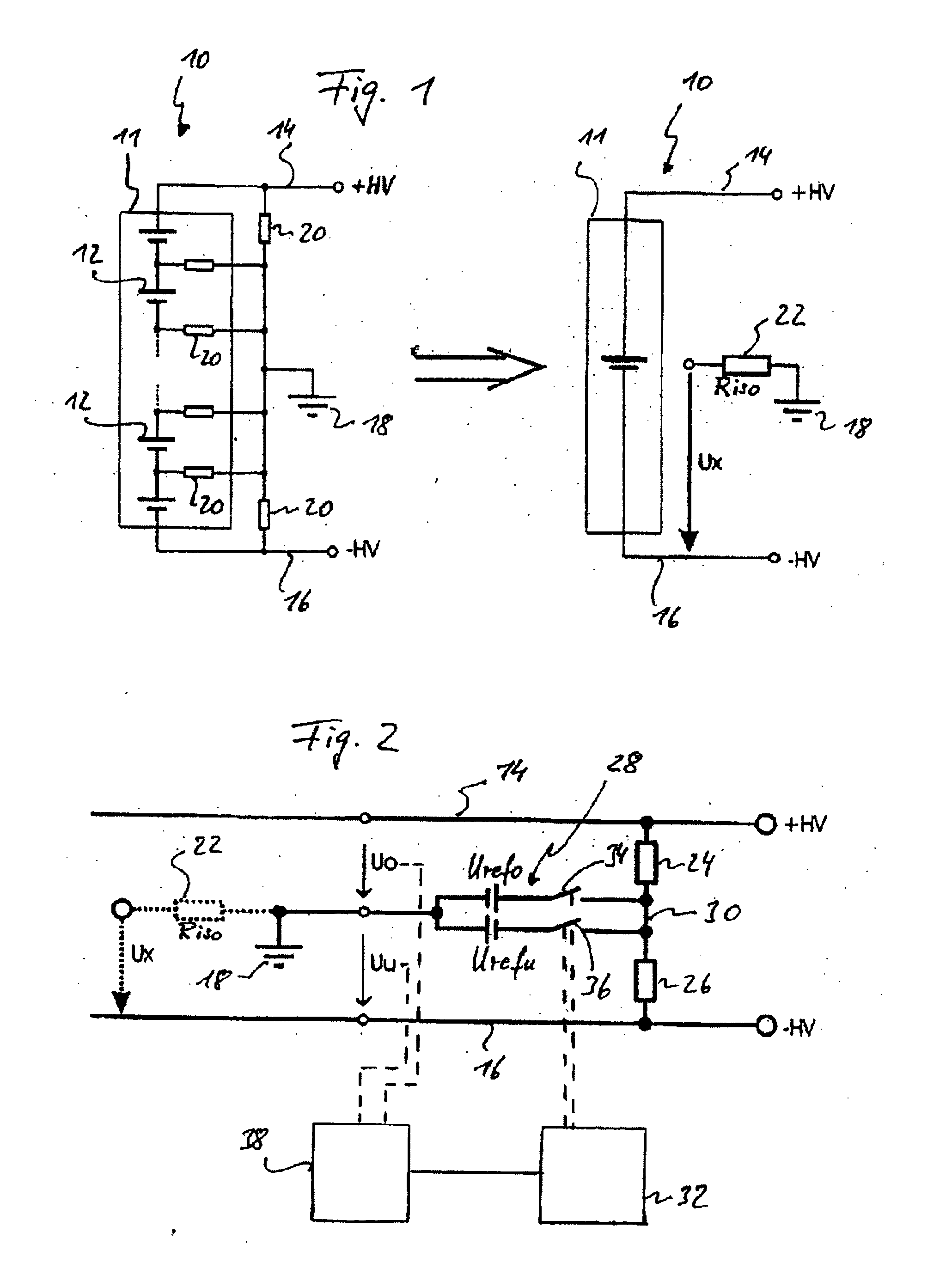Apparatus and method for measuring the insulation resistance of a fuel cell system
a fuel cell and apparatus technology, applied in the direction of fuel cells, air-break switch details, propulsion by batteries/cells, etc., to achieve the effect of precise and reliable measurement of insulation resistan
- Summary
- Abstract
- Description
- Claims
- Application Information
AI Technical Summary
Benefits of technology
Problems solved by technology
Method used
Image
Examples
Embodiment Construction
[0037] The left half of FIG. 1 shows a fuel cell system 10 that consists of a multitude of fuel cells 12 that are electrically series-connected and combined to a stack 11. The fuel cell system 10 contains load-current lines 14, 16, between which is in effect the sum voltage of the individual voltages generated by the fuel cells 12. We refer to this sum voltage as fuel cell voltage. In the example shown in FIG. 1, the upper load-current line 14 is at a positive terminal potential +HV, while the lower load-current line 16 is at a negative terminal potential −HV. For applications in the motor vehicle sector, the fuel cell voltage can for example be several hundred volt. But the invention is not at all limited to this order of magnitude of the fuel cell voltage. Any other desired values of the fuel cell voltage are possible.
[0038] The load-current lines 14, 16 are insulated with respect to the ground point (ground system) 18. In this, the potentials of the load-current lines 14, 16 are...
PUM
| Property | Measurement | Unit |
|---|---|---|
| insulation resistance | aaaaa | aaaaa |
| voltage | aaaaa | aaaaa |
| time | aaaaa | aaaaa |
Abstract
Description
Claims
Application Information
 Login to View More
Login to View More - R&D
- Intellectual Property
- Life Sciences
- Materials
- Tech Scout
- Unparalleled Data Quality
- Higher Quality Content
- 60% Fewer Hallucinations
Browse by: Latest US Patents, China's latest patents, Technical Efficacy Thesaurus, Application Domain, Technology Topic, Popular Technical Reports.
© 2025 PatSnap. All rights reserved.Legal|Privacy policy|Modern Slavery Act Transparency Statement|Sitemap|About US| Contact US: help@patsnap.com



